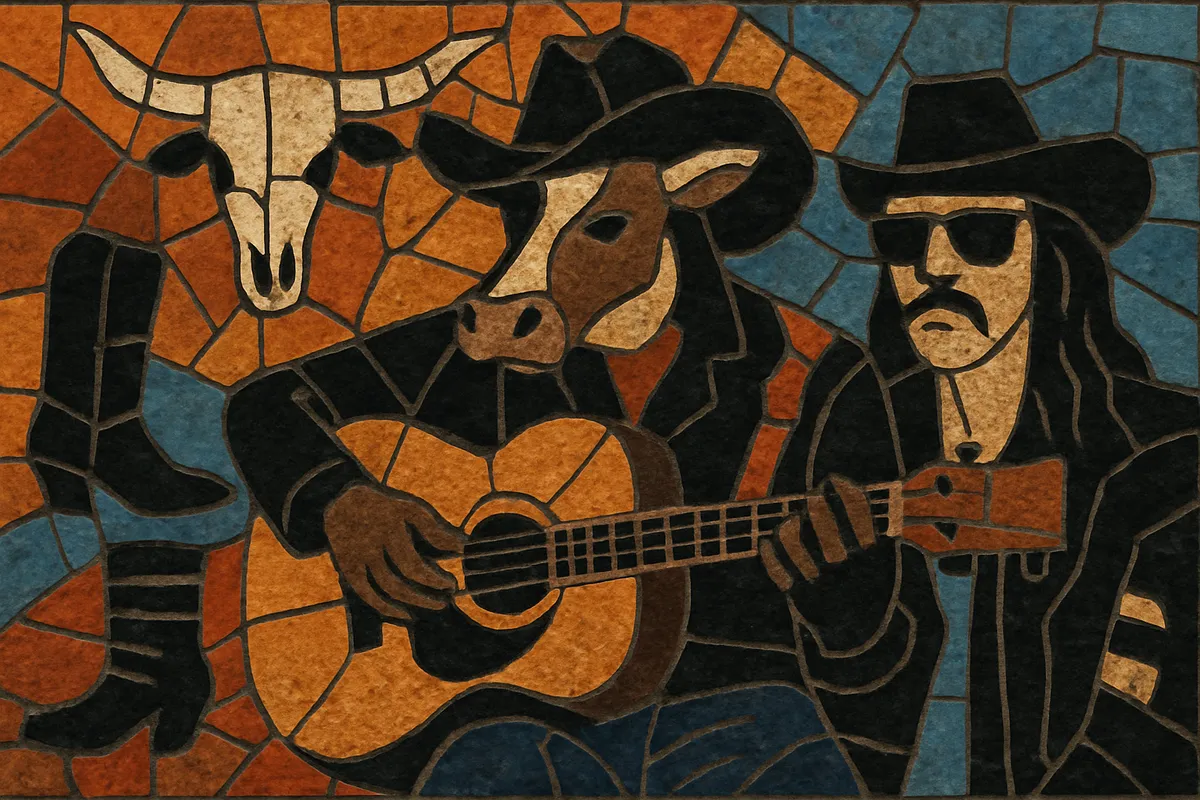Cowpunk is a high-energy fusion of punk’s speed and attitude with classic country’s twang, storytelling, and honky-tonk swagger. It typically marries overdriven guitars and aggressive drumming with two-step and train-beat rhythms, country chord changes, and lyrical themes drawn from barrooms, highways, heartbreak, and hard living.
Emerging primarily in the United States during the early to mid-1980s, cowpunk helped bridge punk rock with American roots music. Bands often mixed electric Telecaster bite with pedal steel, fiddle, or acoustic guitars, delivering raw, unvarnished performances that felt equally at home in dingy punk clubs and old-line country bars.
Cowpunk took shape in the early 1980s as punk musicians—drawn to the directness and emotional candor of classic country—began folding honky-tonk, rockabilly, and Bakersfield sounds into their approach. This happened most visibly in scenes around Los Angeles, Austin, and Nashville, where punk clubs and country bars occasionally overlapped and audiences became accustomed to electric twang delivered at hardcore tempos.
Seminal bands such as Jason and the Scorchers, Rank and File, X (and side-project The Knitters), The Long Ryders, The Beat Farmers, Lone Justice, and Social Distortion infused country forms with punk energy. The Mekons, from the UK’s post-punk milieu, pivoted toward country-inflected material, illustrating the style’s transatlantic pull. Many acts retained country’s I–IV–V and two-step feels while turning up the gain and pace; others used rockabilly slap, Bakersfield-style Telecaster twang, or fiddle and pedal steel in a raucous punk context.
Though cowpunk never dominated the charts, its aesthetic and ethos—unpretentious storytelling, loud guitars, roots instrumentation, and DIY spirit—strongly influenced the 1990s rise of alternative country and the broader Americana movement. It also validated punk’s compatibility with American roots traditions, paving the way for subsequent waves of roots-conscious punk and folk-punk hybrids.
Cowpunk persists as a live-first, scene-driven style and a key reference point for bands that want to combine grit, twang, and speed. Its legacy is heard in alt-country’s attitude, in punk bands’ occasional forays into twang, and in the enduring appeal of hard-edged songs about work, love, loss, and the open road.


